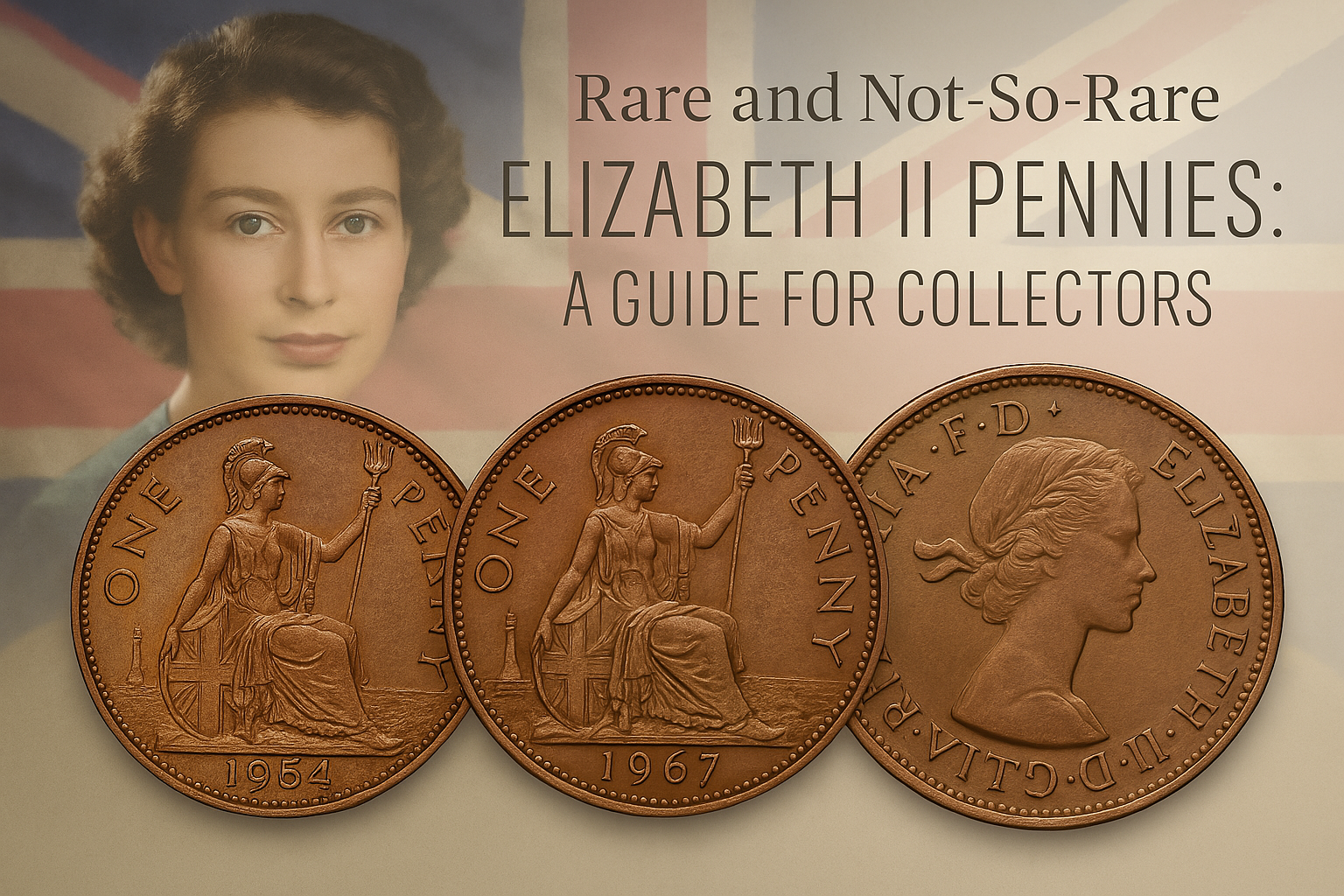Rare and Not-So-Rare Elizabeth II Pennies: Collector’s Guide

Rare and Collectible Pre-Decimal Elizabeth II Pennies
1953 Penny
Why it’s collectible: First year of Queen Elizabeth II’s coinage. Issued only in proof and specimen sets, not general circulation.
Value: £2–£15 depending on condition (higher for perfect proof examples).
Tip: Look for them in original Royal Mint packaging—makes them more desirable.
1954–1960 Pennies
Common in circulated form, but uncirculated examples are now popular with collectors.
Value:
Circulated: £0.10–£1
Uncirculated: £2–£10+
Rare Decimal Elizabeth II 1p Coins
1971 Decimal Penny (First Year)
Why it’s collectible: The first year of decimalisation in the UK. While not rare, it’s a historic issue.
Value: Face value to £2 for brilliant uncirculated (BU) versions.
1983 New Penny (Rare Error)
Why it’s rare: In 1982, the wording on the coin changed from “NEW PENNY” to simply “ONE PENNY”. However, a few 1983 coins were mistakenly struck with the outdated “NEW PENNY” reverse.
Value: £100–£250+ depending on condition and authenticity.
Note: Be cautious—many fakes exist.
2008 Old Reverse Penny
Why it’s collectible: In 2008, the Royal Mint introduced the new shield reverse, but a few old-style Britannia reverse coins were struck in error.
Value: £5–£50 depending on condition and demand.
Not-So-Rare but Still Interesting Pennies
2009–2017 Shield Reverse 1p Coins
Why they’re collected: The reverse is part of the famous “Royal Shield” puzzle that forms a full shield across multiple coins. Putting together the whole set is fun for collectors.
Value: Face value, unless in uncirculated or proof condition.
2022 Final Elizabeth II Penny
Why it’s special: The last 1p coin issued with Elizabeth II’s portrait before her death.
Value: £1–£5 in BU or proof sets (expected to rise over time).
What Affects the Value of a Penny?
Condition: Coins in Brilliant Uncirculated (BU) or Proof condition are worth the most.
Rarity: Coins with minting errors, low mintage, or unusual features are key.
Historical Significance: First and last issues, or coins tied to significant events, are more collectible.
Packaging: Coins still in Royal Mint packaging are often worth more.
Tips for Collectors
Avoid polishing or cleaning coins—it can ruin their value.
Store in coin flips or albums to protect from damage.
Look carefully at dates and wording, especially for errors like the 1983 “New Penny.”
Buy from trusted sellers or dealers if you’re investing in rarer coins.
Final Thoughts
Most Elizabeth II pennies are common and still found in change today—but a few are real collector gems. If you come across a 1953 proof, 1983 New Penny, or a 2008 Britannia error, you may be holding something special. And even the more common pennies have historical value, marking the reign of one of Britain’s most iconic monarchs.

 Art
Art Asian
Asian Banknotes
Banknotes Numismatics
Numismatics Porcelain
Porcelain Buttons
Buttons Jewelry
Jewelry Silverware
Silverware Ceramics
Ceramics Militaria
Militaria Books
Books Glassware
Glassware Leatherware
Leatherware Philately
Philately Other antique
Other antique Gifts
Gifts Accessories & Services
Accessories & Services